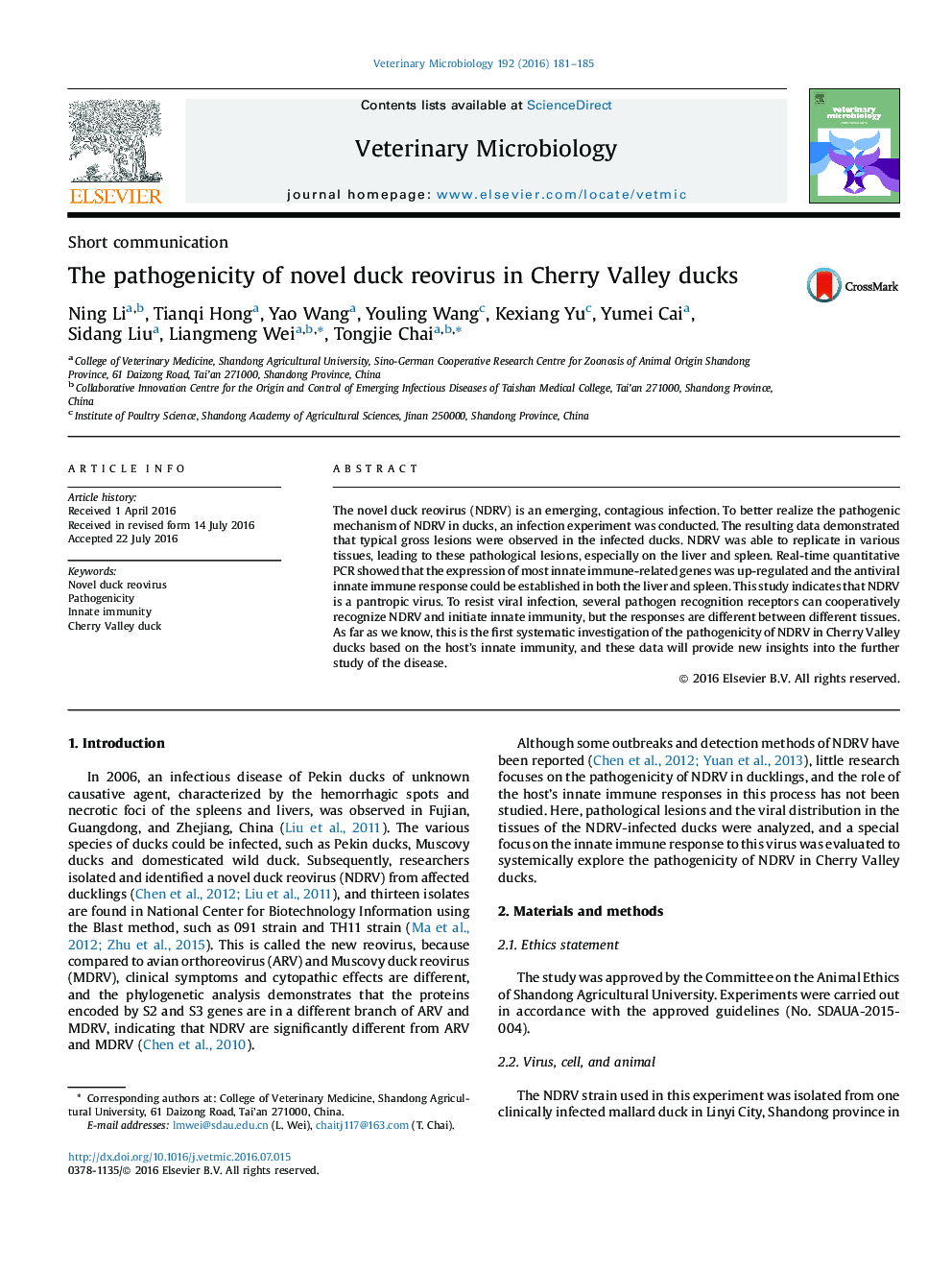| Article ID | Journal | Published Year | Pages | File Type |
|---|---|---|---|---|
| 5799659 | Veterinary Microbiology | 2016 | 5 Pages |
â¢NDRV is a pantropic virus that can replicate in many tissues of the infected ducks, especially the liver and spleen.â¢RLRs- and TLR3-mediating signal pathway might cooperatively recognize NDRV, initiating responses in the liver and spleen.â¢Cytokines, such as IFNs, Mx, OAS and IL-8, played an important role in defensing against NDRV infection.
The novel duck reovirus (NDRV) is an emerging, contagious infection. To better realize the pathogenic mechanism of NDRV in ducks, an infection experiment was conducted. The resulting data demonstrated that typical gross lesions were observed in the infected ducks. NDRV was able to replicate in various tissues, leading to these pathological lesions, especially on the liver and spleen. Real-time quantitative PCR showed that the expression of most innate immune-related genes was up-regulated and the antiviral innate immune response could be established in both the liver and spleen. This study indicates that NDRV is a pantropic virus. To resist viral infection, several pathogen recognition receptors can cooperatively recognize NDRV and initiate innate immunity, but the responses are different between different tissues. As far as we know, this is the first systematic investigation of the pathogenicity of NDRV in Cherry Valley ducks based on the host's innate immunity, and these data will provide new insights into the further study of the disease.
